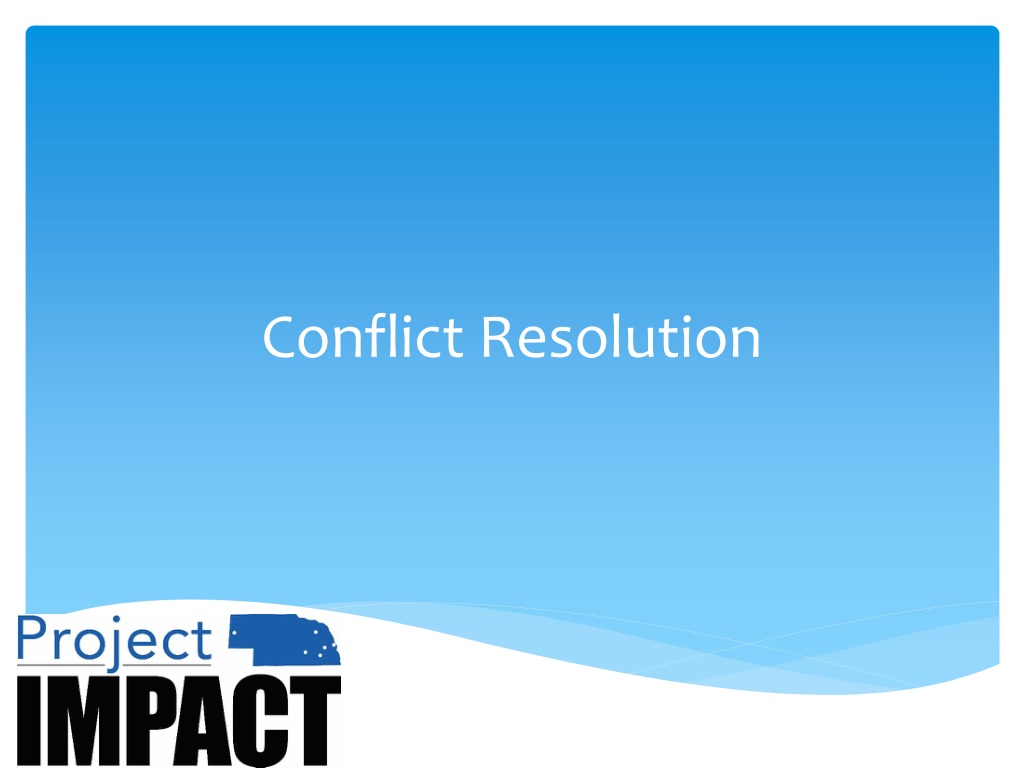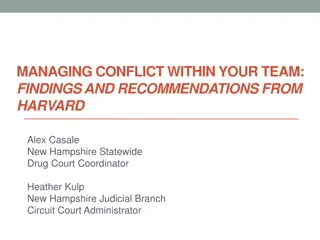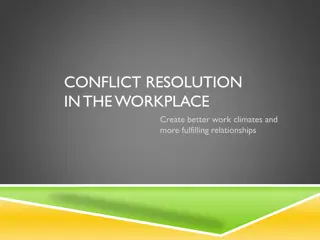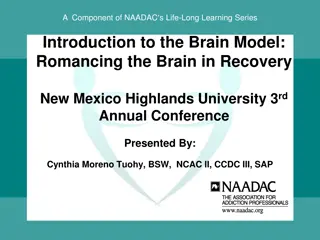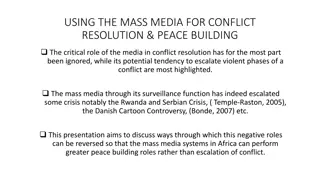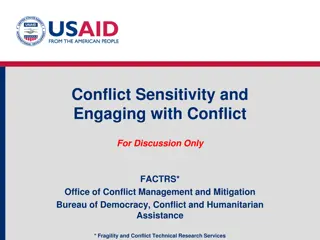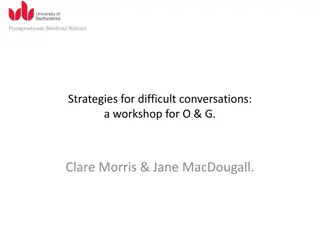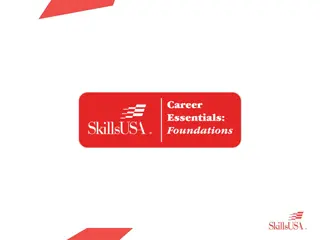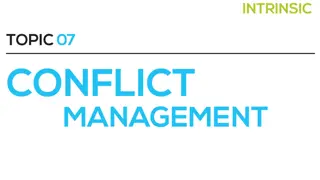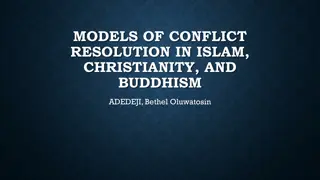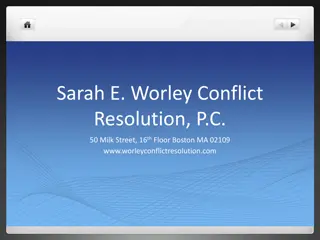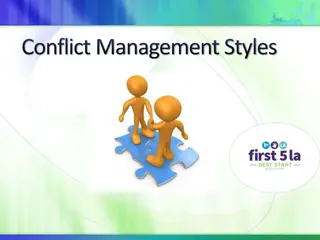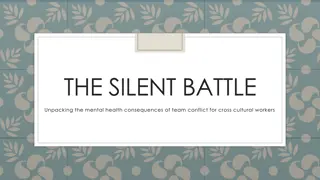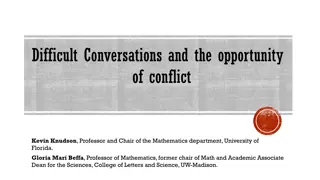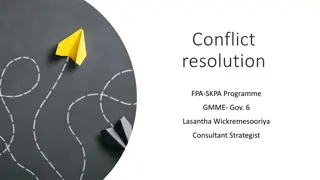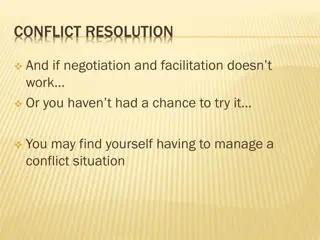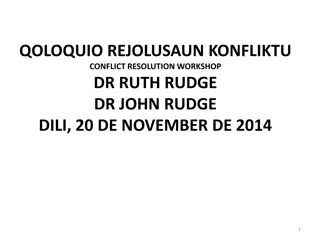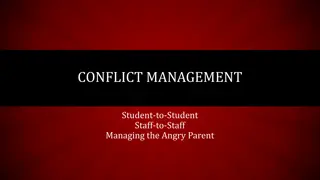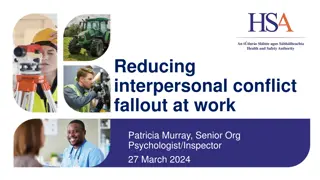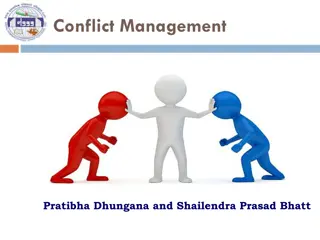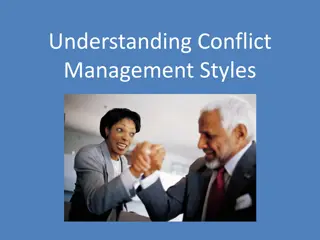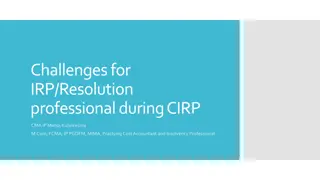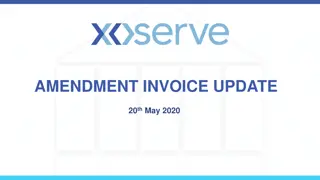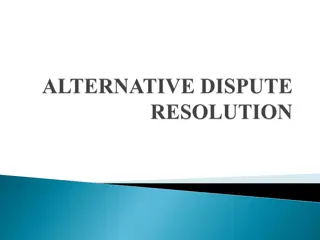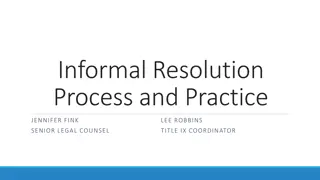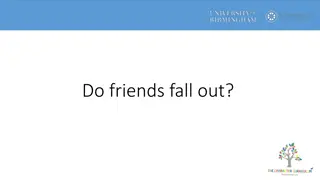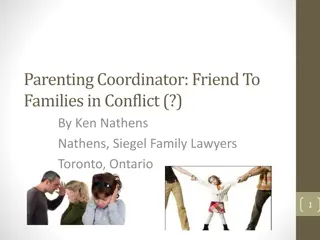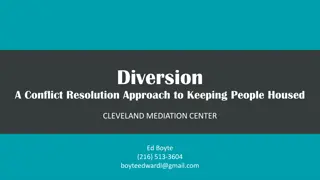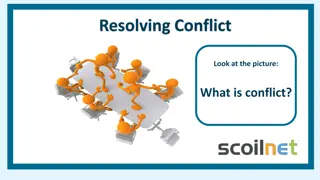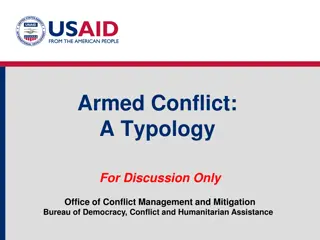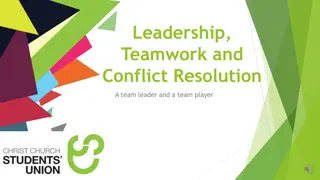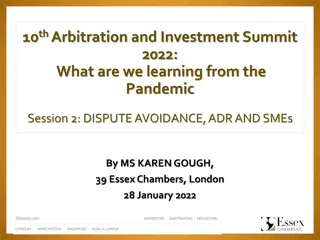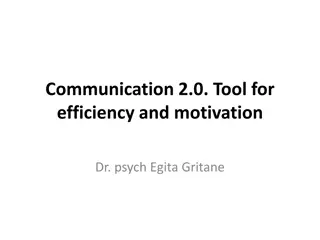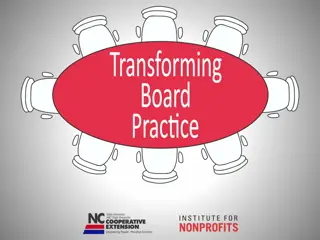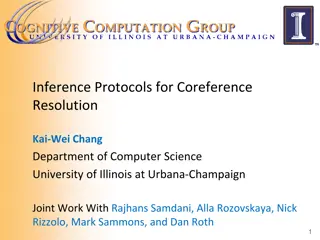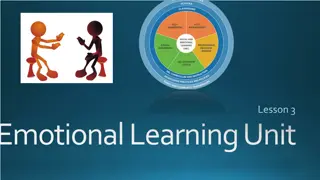Effective Conflict Resolution Strategies Workshop
Explore the importance of healthy conflict resolution, identify primary causes and responses to conflict, learn about the 5 conflict styles, and understand how to resolve conflicts in a productive manner. Discover common causes of conflict, responses to conflict, and different conflict styles such as avoidance and accommodation. Gain insights on why conflict resolution is essential for physical health, mental well-being, career growth, and relationships.
Download Presentation

Please find below an Image/Link to download the presentation.
The content on the website is provided AS IS for your information and personal use only. It may not be sold, licensed, or shared on other websites without obtaining consent from the author. Download presentation by click this link. If you encounter any issues during the download, it is possible that the publisher has removed the file from their server.
E N D
Presentation Transcript
Workshop Deliverables Workshop deliverables: Understand importance of healthy conflict resolution Identify primary causes and responses to conflict Identify and discuss the 5 Conflict styles Understand how to resolve conflict in a healthy/productive manner
What is conflict? What words come to mind when we think of conflict?
Why should I care? Conflict is inevitable! You cannot avoid it! Be prepared to face it! Why should I care to solve conflict in a healthy way? physical health mental health career relationships
Causes of conflict Common causes of conflict: Misunderstandings Personality clashes Competition for resources Authority issues Hurt feelings Lack of co-operation Differences of opinion Low performance Values or goal differences Cultural differences
Responses to conflict Common responses to conflict: Avoid the person Change the subject Try to understand the other person s point of view Find a judge/arbitrator Give in Work toward a mutually agreeable solution Apologize Whine or complain Fight it out Pretend to agree Try to find common ground Admit that you are wrong Turn the conflict into a joke
Conflict Styles Which style do you use most often? Avoidance Accommodation Competition Compromise Collaboration
Conflict styles Avoidance I ll think about it tomorrow Avoidance means that a person knows there is a conflict but chooses not to deal with it. An avoider walks away from the problem and may avoid the person with whom he or she is having the conflict.
Conflict styles - Accommodation It would be my pleasure Accommodation is putting aside one s own needs and concerns to satisfy the needs of the other person. Don t be a serial appeaser!!
Conflict styles - Competition my way or the highway Competition is trying to win or make the other person lose by giving in. In this style, a person defends his/her position or pursues his/her own goals without regard for the needs of the other person.
Conflict styles - Compromise let s make a deal & meet halfway Compromise is giving up something to get something. It is an attempt to seek a middle ground. Be pragmatic, come to a sensible solution
Conflict styles - Collaboration two heads are better than one Collaboration is working together to satisfy the needs of both people. It involves problem solving and assumes that both people can get their needs met. Use during most important issues!!
Working through Conflict slide 1 Step 1: Cool off Hot tempers/emotions will never solve problems, get your head clear before confronting issue Take a moment to brainstorm a few things that make you feel better when your angry.
Working through Conflict slide 2 Step 2: Use I messages Helps you express how you fell without attacking or blaming others Examples: I feel like you have not done you part with the homework project I m annoyed because you left the kitchen a mess again you messages make people go on the defensive You left the kitchen a mess again
Working through Conflict slide 3 Let s practice using I messages Directions take these you messages and turn them into I messages 1. You never let me watch what you want on the TV 2. You never listen to me when I am talking. 3. You always make me late for work each morning. 4. You are cutting corners with your job duties and making more work for me.
Working through Conflict slide 4 Step 3: Retell the person what you heard Examples: I hear that you wanted to go out with your friends so you didn t clean up the kitchen. I hear that you intended to do it when you got home. I hear that you are frustrated that I have not cleaned up the kitchen and it shouldn t be your responsibility to clean up my mess.
Working through Conflictslide6 Step 4: Take responsibility In most conflicts, both parties have some responsibility over the situation. However, most of us just blame the other person entirely. Taking some responsibility increases the likelihood of resolving the conflict. Examples: I should have cleaned the mess before I went out I shouldn t have yelled at you about the kitchen mess
Working through Conflict slide 7 Step 5: Brainstorm solutions that satisfy both people Be willing to work together What are some solutions to the conflict of someone leaving the kitchen a mess?
Working through Conflict final slide Step 6: Affirm, forgive or thank. A handshake, hug, or kind word gives closure to the resolution of conflicts. Forgiveness is the highest form of closure.
Workplace Conflict Why is it important to practice effective conflict resolution/styles in the workplace? What are some examples of workplace conflict you ve experienced or witnessed?
Workplace Conflict final slide Complete the scenario exercise
Additional Information-2 Nondiscrimination and Equal Opportunity Statement Metropolitan Community College does not discriminate on the basis of race, color, national origin, religion, sex, marital status, age, disability or sexual orientation in admission or access to its programs and activities or in its treatment or hiring of employees. This work is licensed under the Creative Commons Attribution 4.0 International License. To view a copy of this license, visit http://creativecommons.org/licenses/by/4.0/ This product was funded by a grant awarded by the U.S. Department of Labor s Employment and Training Administration. The product was created by the grantee and does not necessarily reflect the official position of the U.S. Department of Labor. The Department of Labor makes no guarantees, warranties, or assurances of any kind, express or implied, with respect to such information, including any information on linked sites and including, but not limited to, accuracy of the information or its completeness, timeliness, usefulness, adequacy, continued availability, or ownership. The Nebraska Consortium of community colleges is comprised of equal opportunity/affirmative action institutions.
